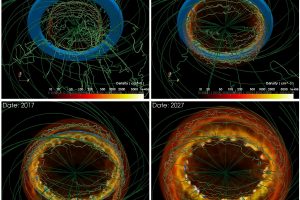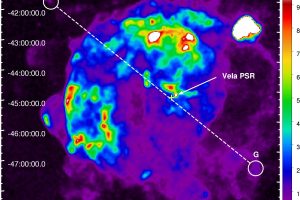31 years of evolution of a supernova remnant. The study: “3D MHD modeling of the expanding remnant of SN 1987A. Role of magnetic field and non-thermal radio emission” of S. Orlando (INAF-OAPA) recently published by A&A

During the 1987 February 23rd night, astronomers observed the explosion of a supernova in the Large Magellanic Cloud, a satellite galaxy of the Milky Way. The exploded star was the blue supergiant Sanduleak (Sk) − 69o202, with a mass of 20 solar masses, and its explosion produced the supernova remnant SN 1987A. From that moment, SN 1987A was observed with
» Read more

